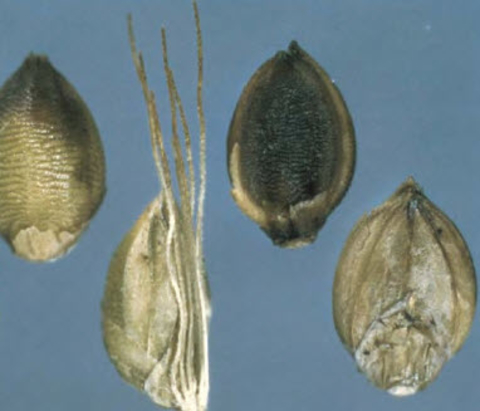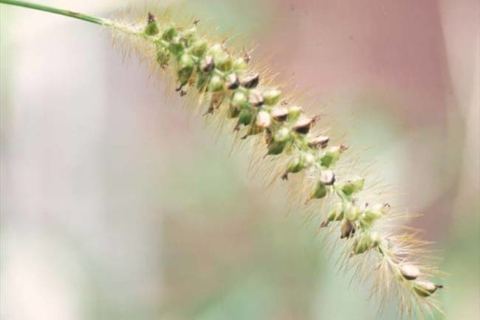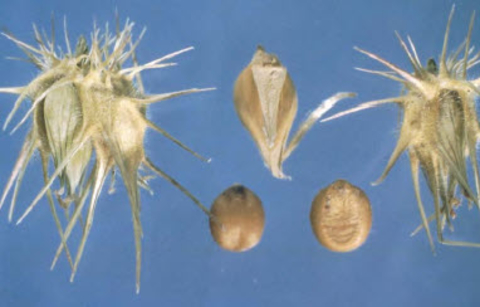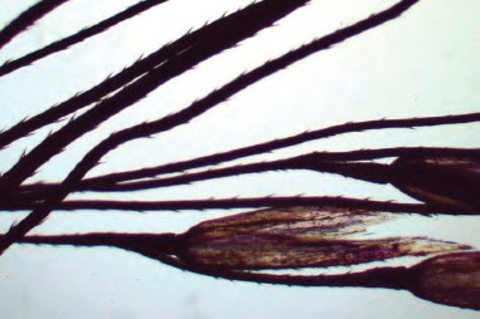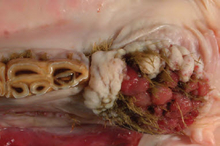Quick facts
-
Don’t feed hay with moderate amounts of foxtail and sandbur seed heads, and/or ticklegrass seed heads and stems.
-
These grasses can cause trauma to the mouth and gut of horses.
-
Timely mowing can prevent seed head production of these grasses.
-
There are no herbicides available for these grasses in grass hayfields or pastures.
What plants cause mouth blisters?
-
Foxtail
-
Sandbur
-
Ticklegrass
Don’t feed hay containing moderate amounts of foxtail and sandbur seed heads, and/or ticklegrass seed heads and stems.
Identifying
Foxtail
-
Bottle brush-like, light green seed heads
Sandbur
-
Barbed, slender and purple tinged seeds
Ticklegrass
-
Green to purple and shiny seed heads
-
Tan seed heads when mature
-
Rough branches of flowers
Where are they found?
Foxtail is found throughout the United states. It’s commonly found in recently disturbed soils and sandy areas. They often grow in hay fields and pastures after a drought or seeding.
Sandbur is found in the central part of the United States. Similar to foxtail it’s commonly found in recently disturbed soils and sandy areas. They often grow in hay fields and pastures after a drought or seeding.
Ticklegrass is found from the Dakotas south to Texas including most of the central and eastern United States. Ticklegrass grows in dry or moist soil in the following areas:
-
Woods
-
Fields
-
Bogs
-
Meadows
-
Roadsides
-
Waste areas
-
Stream banks
-
Shores
-
Upland habitats
Harm
These plants can cause physical trauma to the horse’s mouth, gut, and sometimes the skin.
Ticklegrass, sandbur and foxtail seed heads can embed into the horse’s lips, mouth, gums and lower gut when eaten. This is most common when baled in hay and rarely occurs in fresh forage.
The leaves of sandbur and foxtail don’t cause harm to horses. Horses can graze these but we don’t recommend them as a forage species.
Signs of trauma
-
Blisters or ulcers on the lips or mouth after eating these plants
-
Weight loss occurs from damage to the gut if horses eat these plants long term
Treatment
Remove the plant source from your horse. You can provide supportive treatment for the blisters and ulcers such as rinsing with water or a topical cream.
Control
Mowing is a relatively effective way to control all three grasses. Timely mowing can eliminate or reduce seed production.
In grass pastures or hay fields, there are no herbicides available for control of these grasses. Spot treatment with glyphosate is an option. But good pasture management will help reduce or eliminate weeds.
Lifecycle
-
Foxtail and sandbur are annuals reproducing from seed.
-
Ticklegrass is a perennial.
Reviewed in 2021


